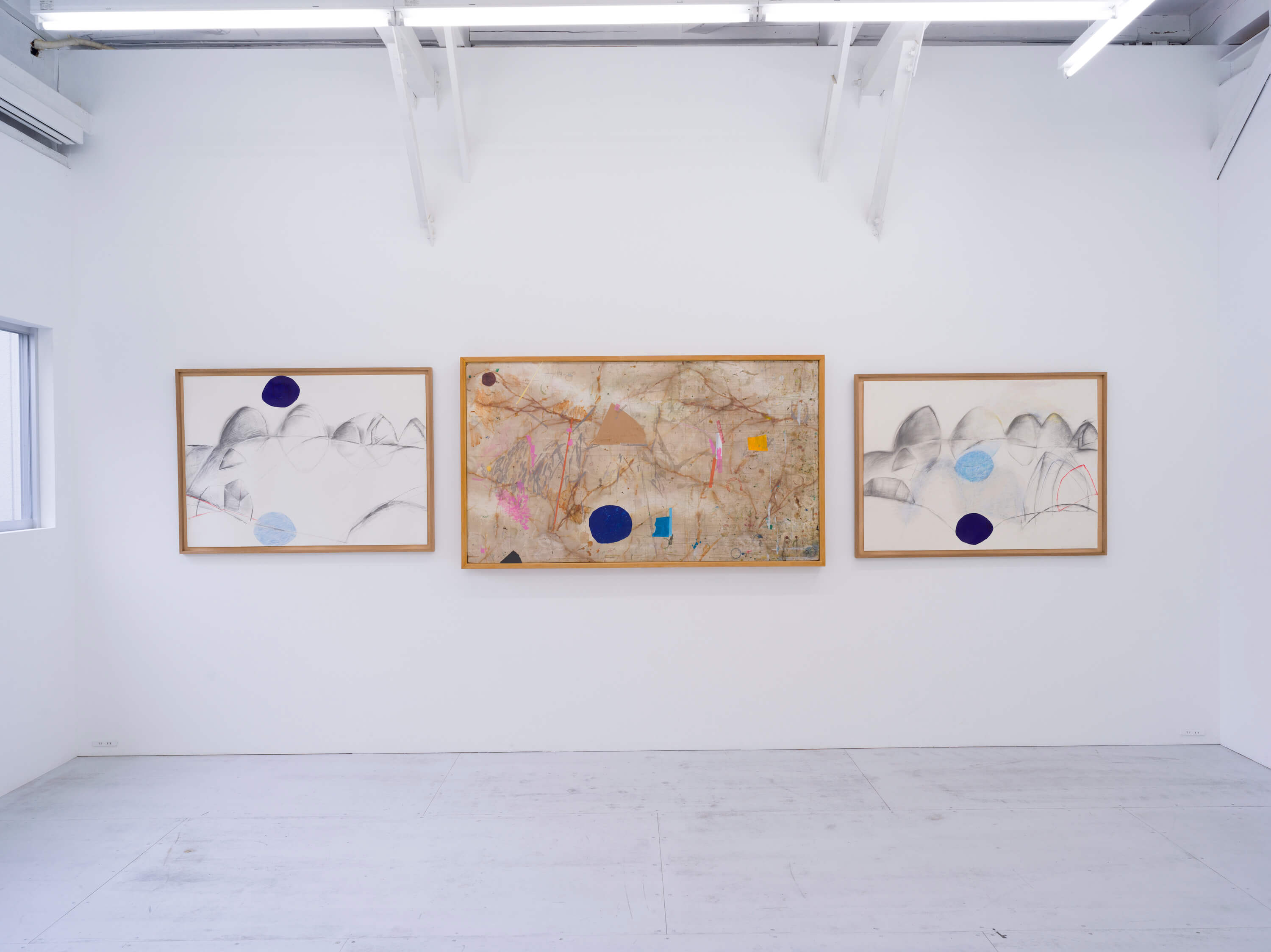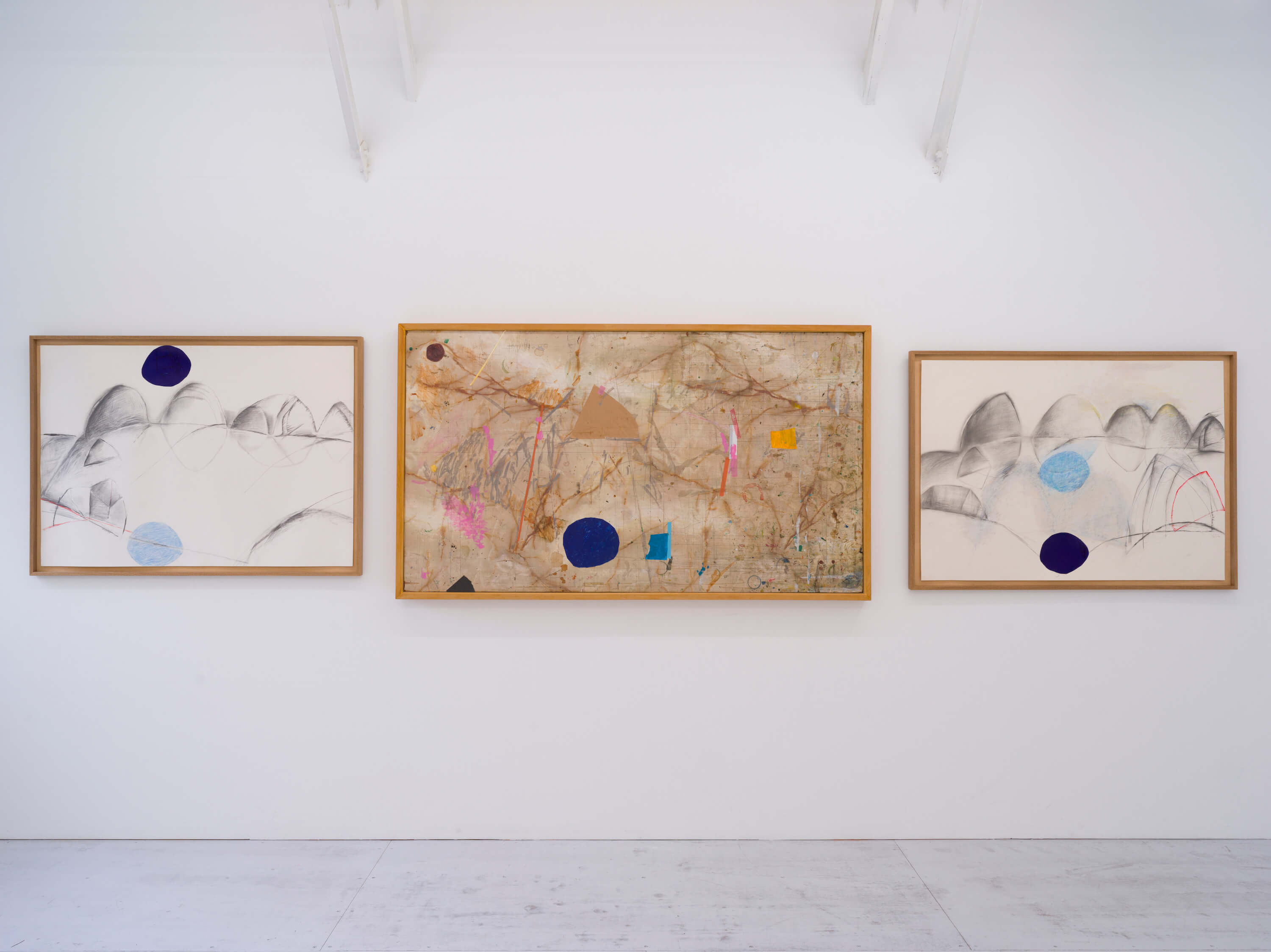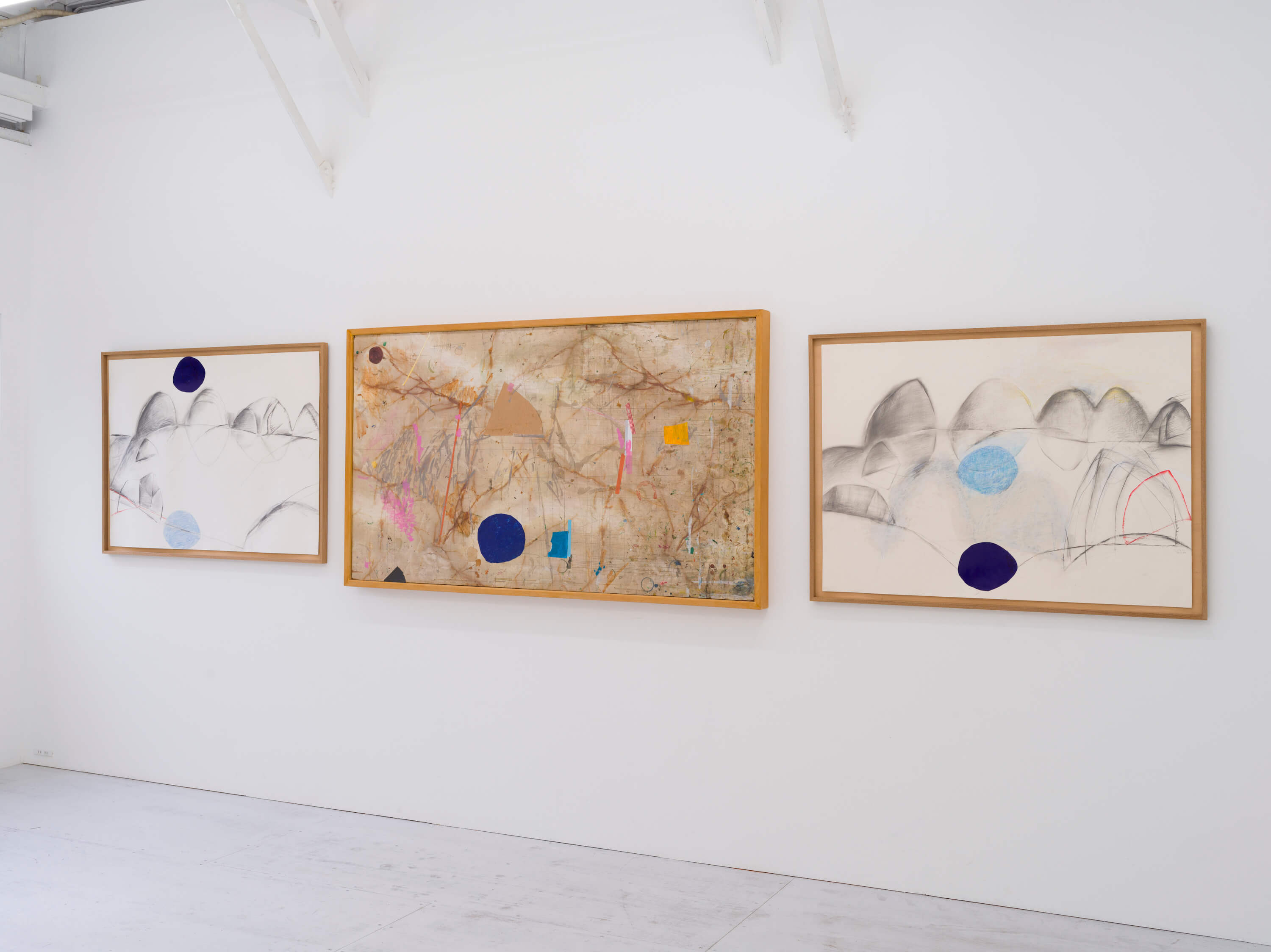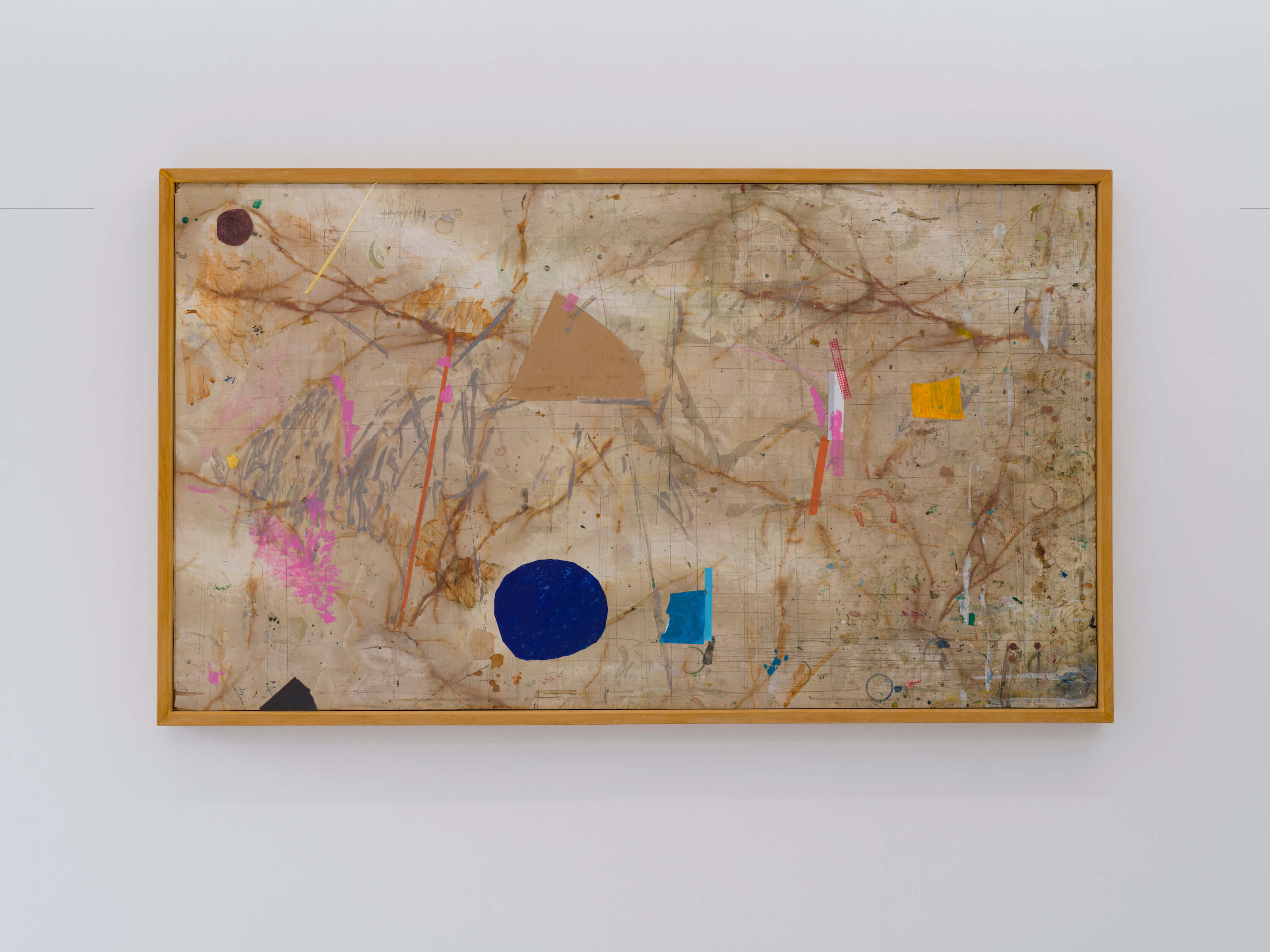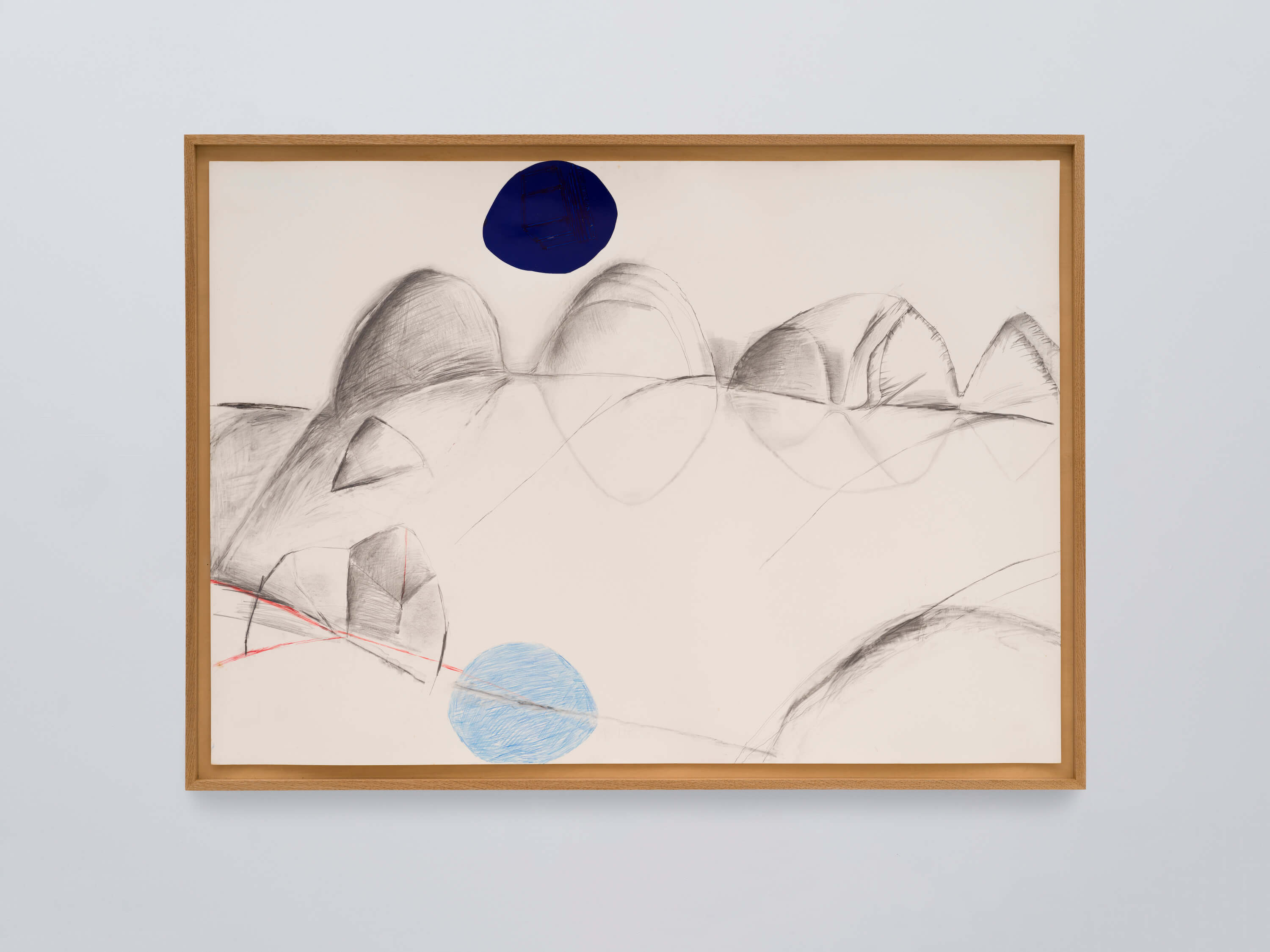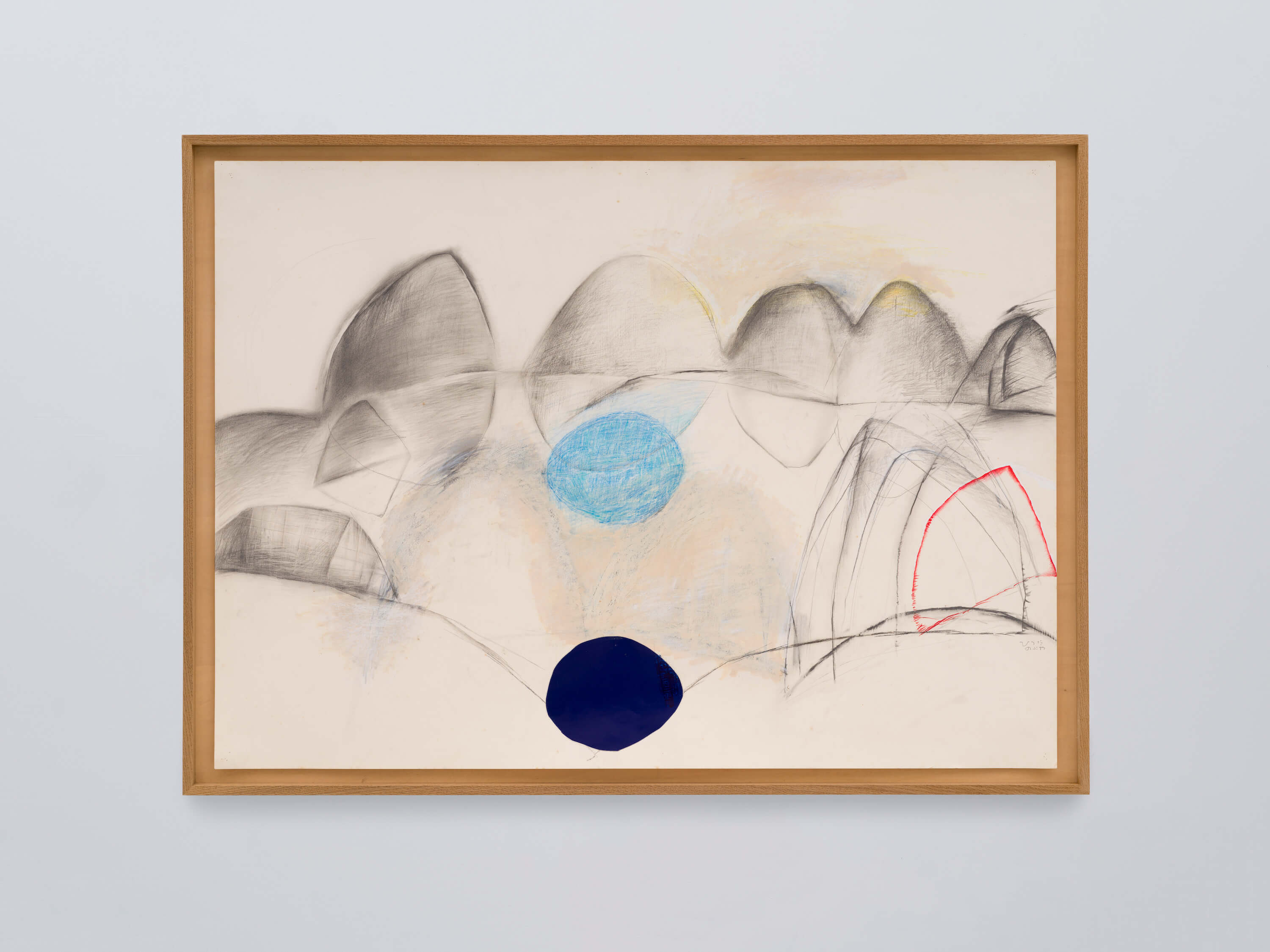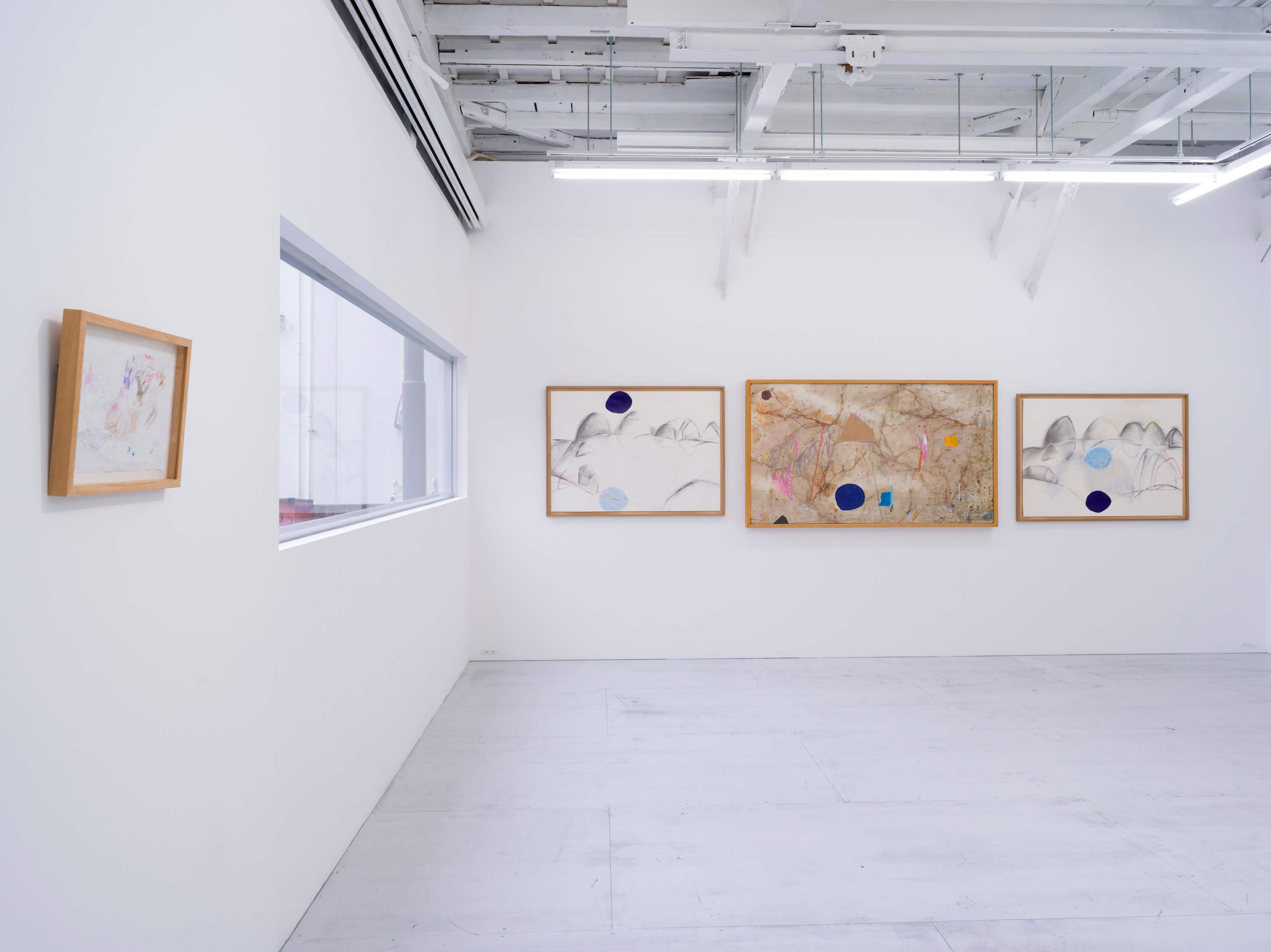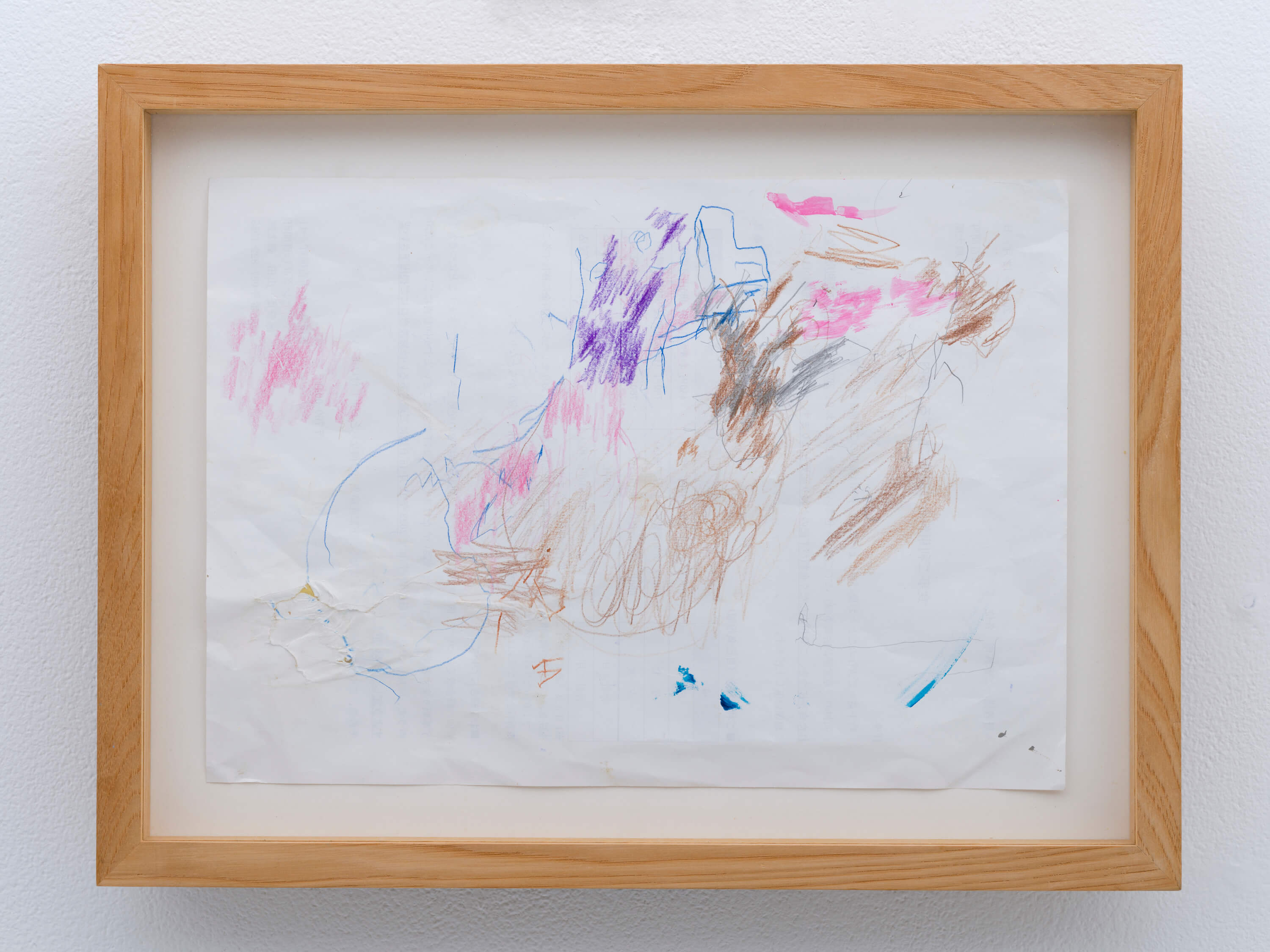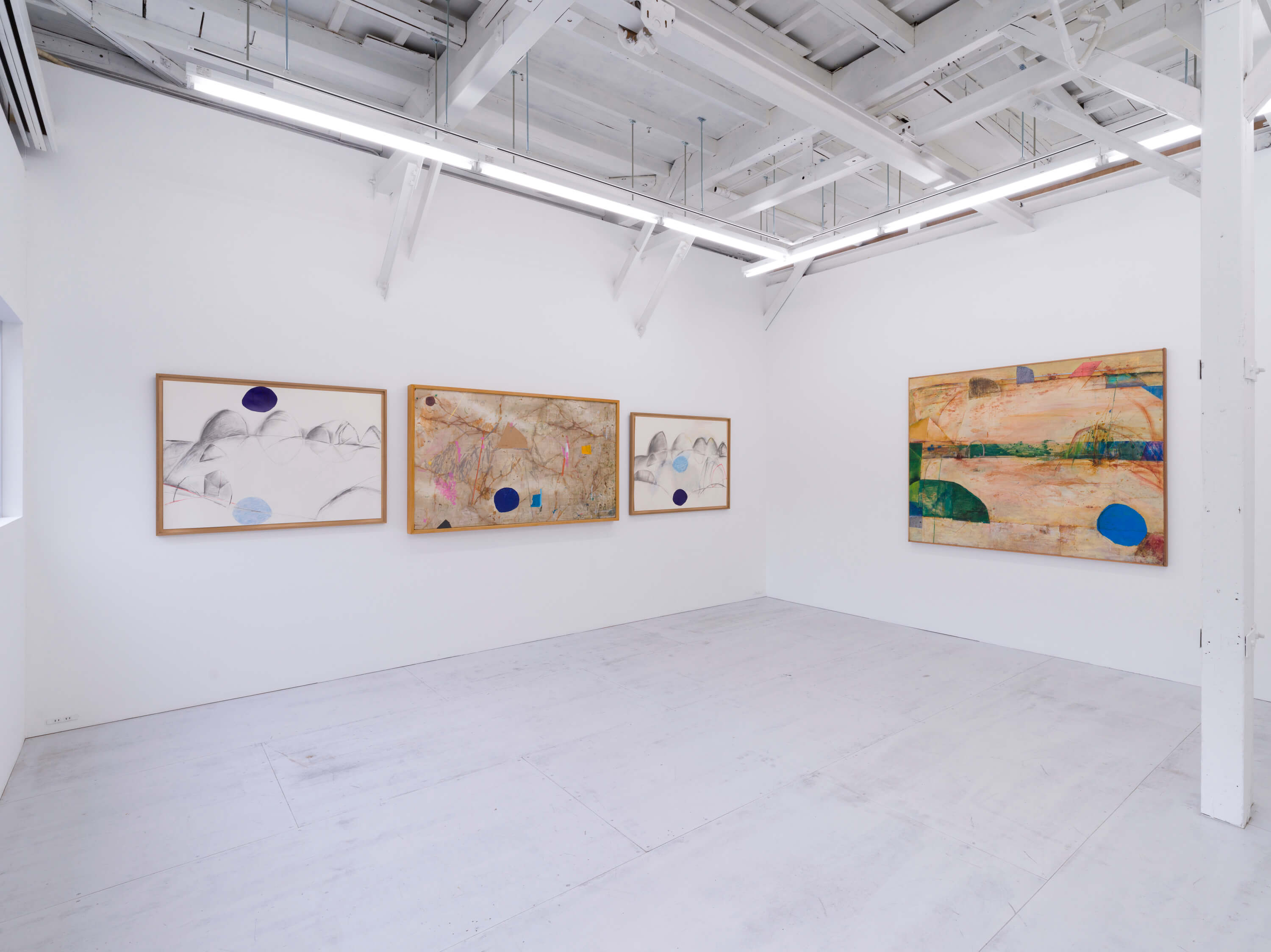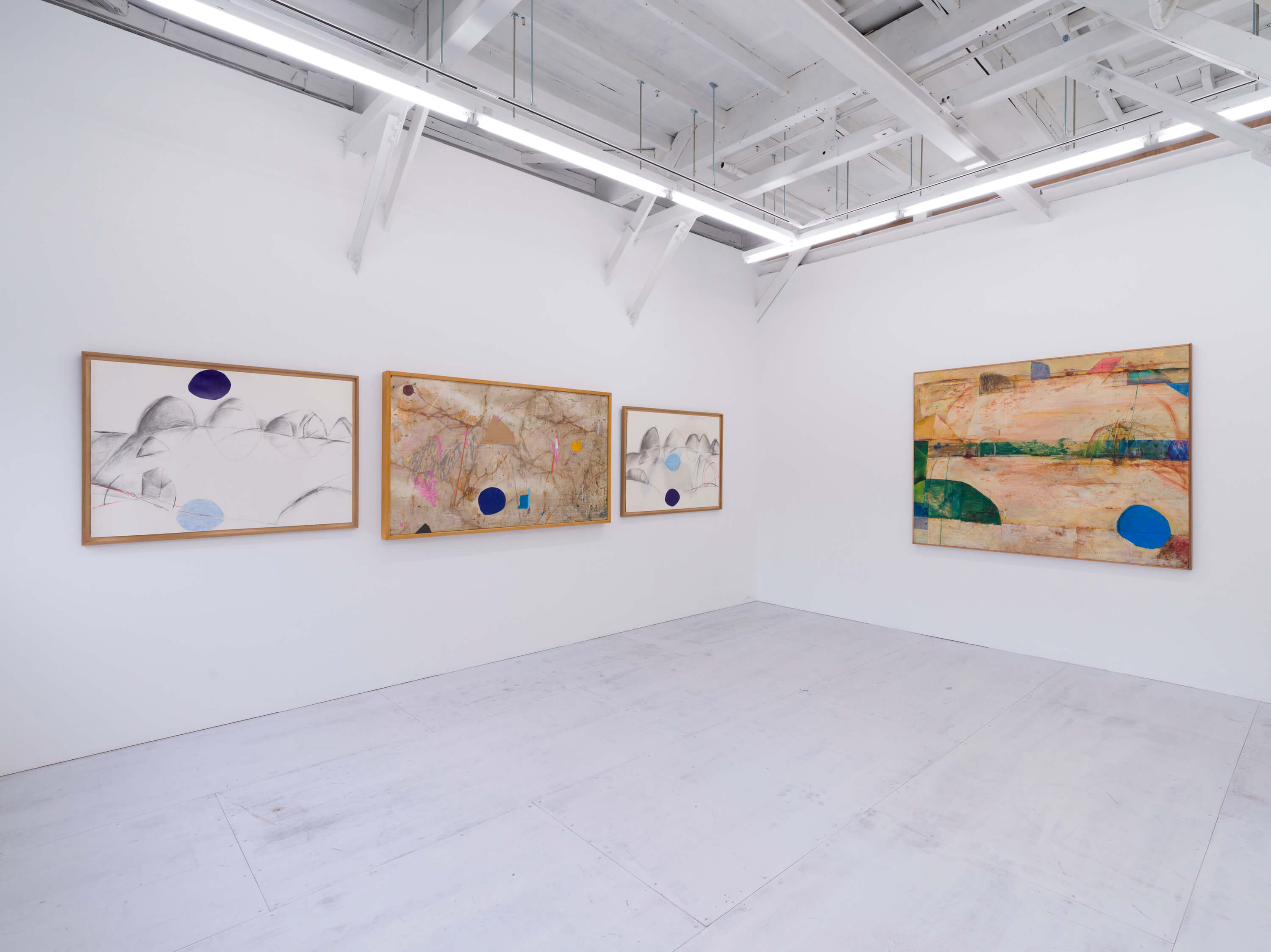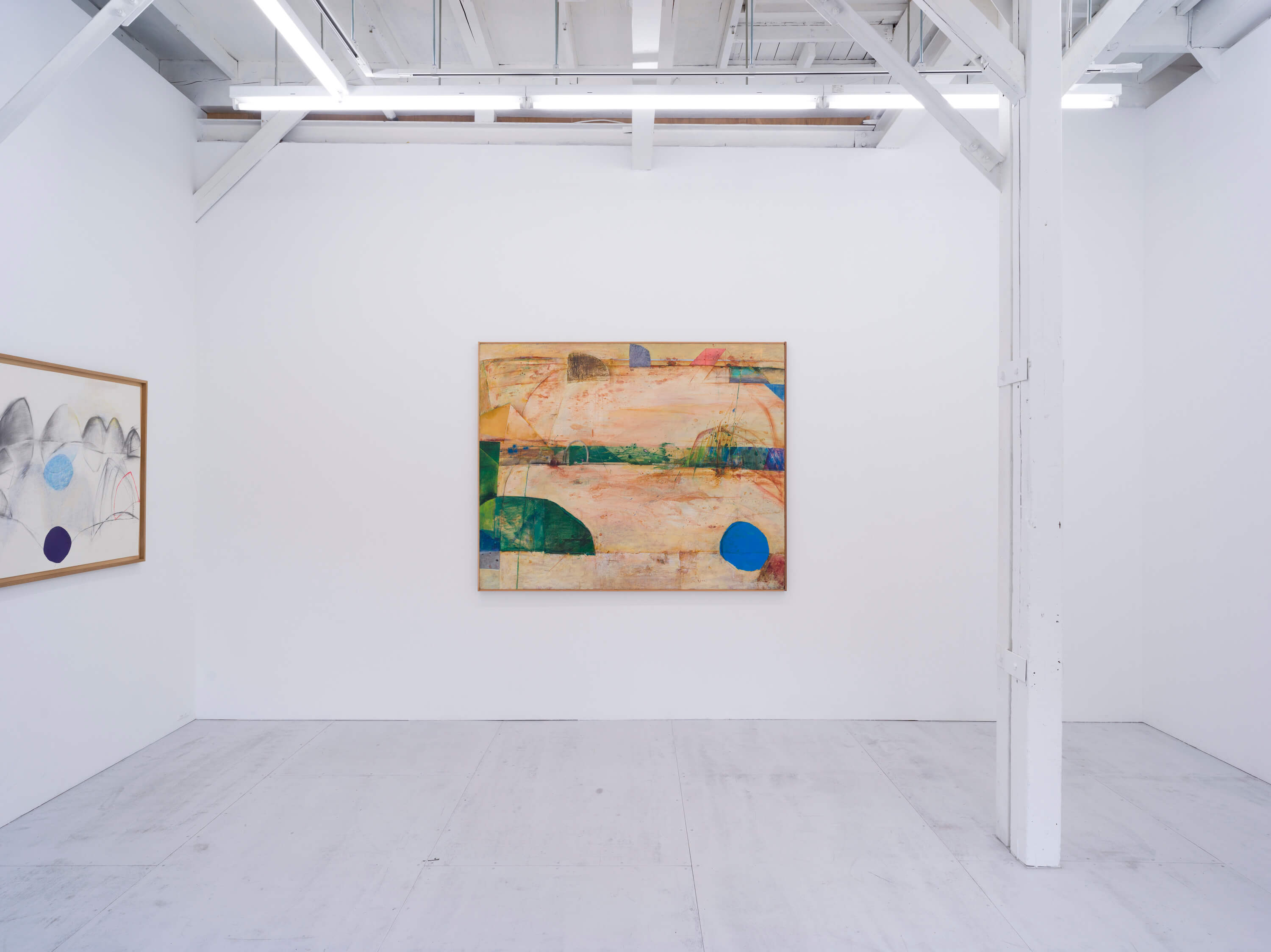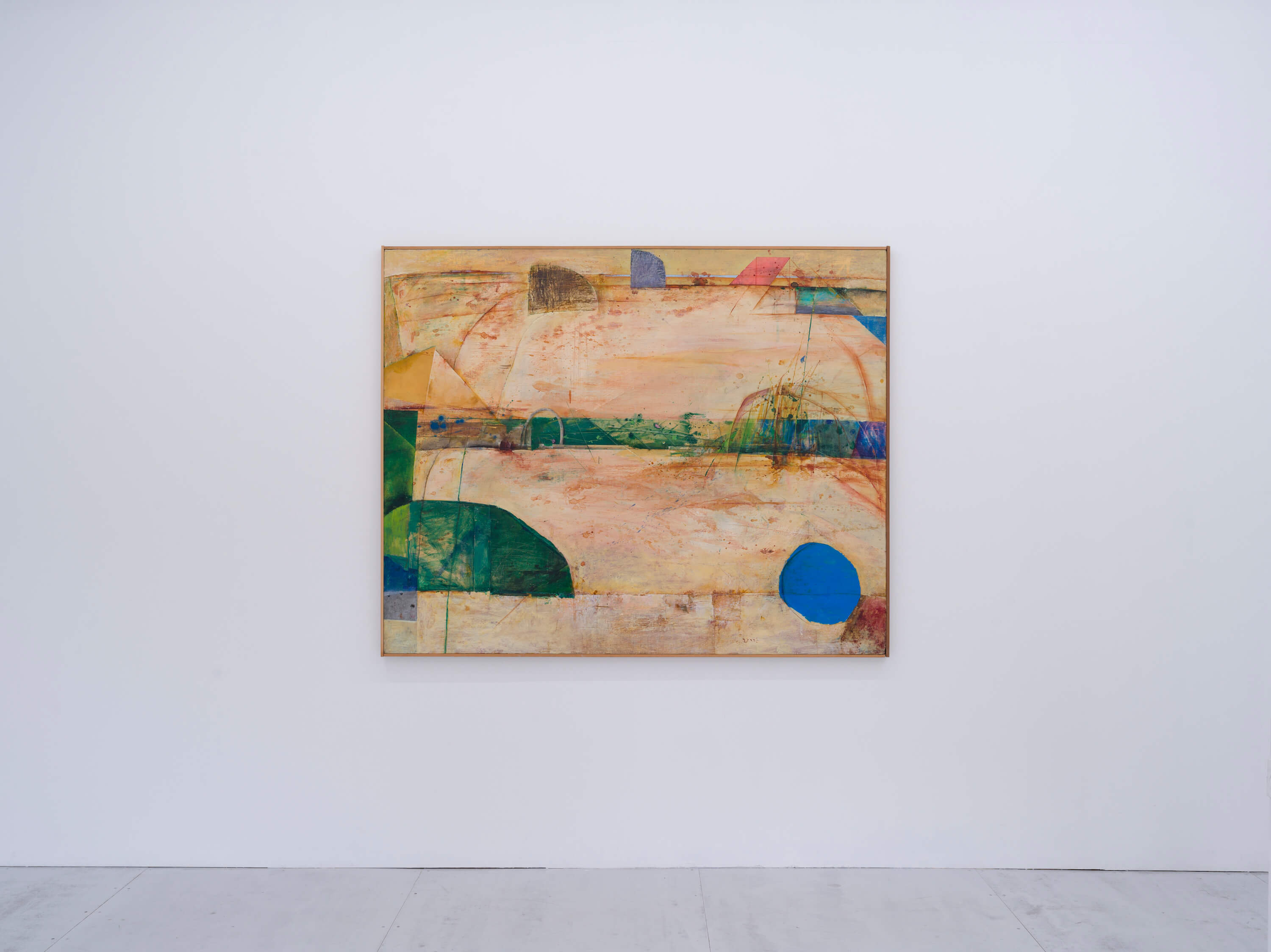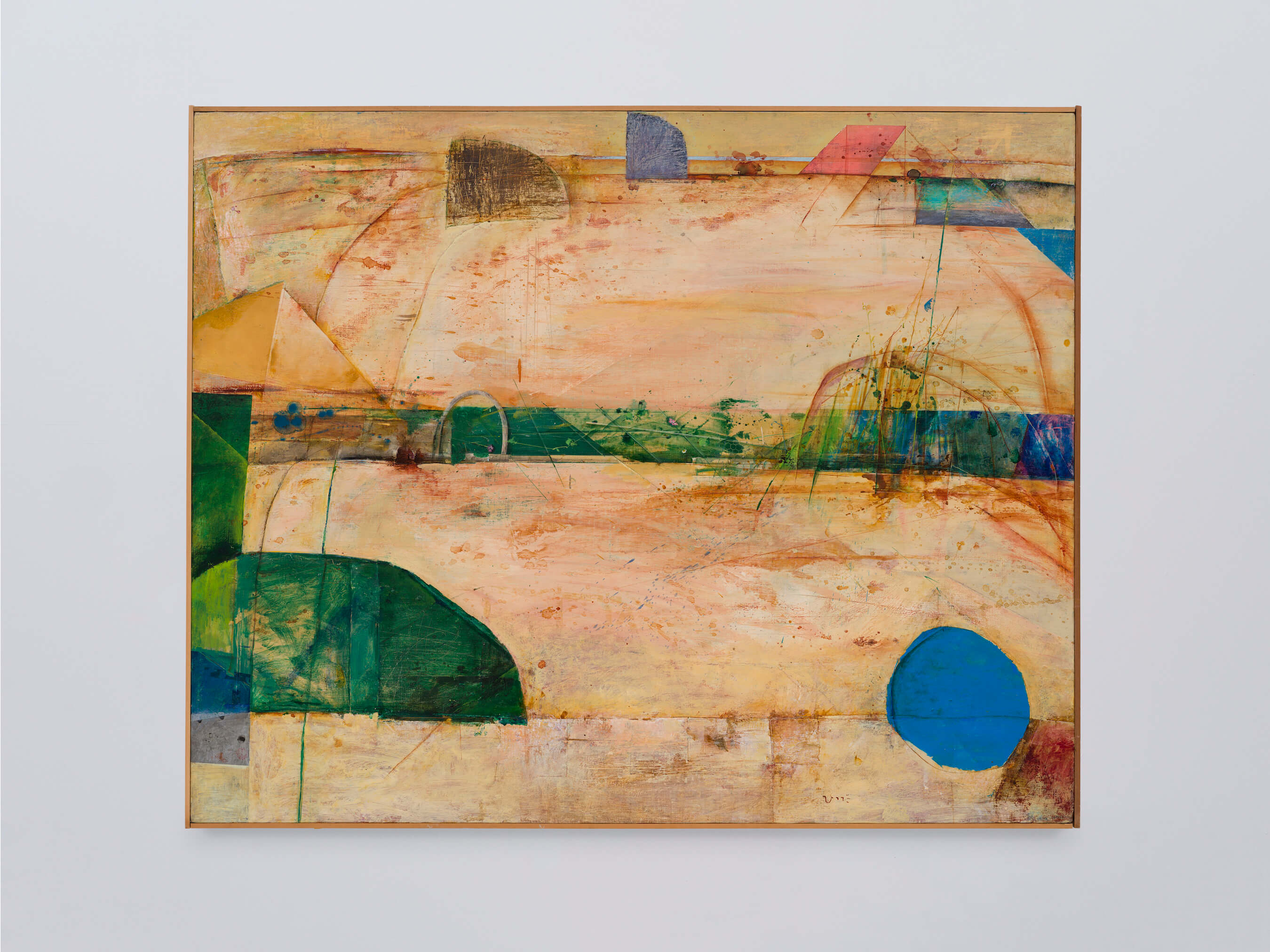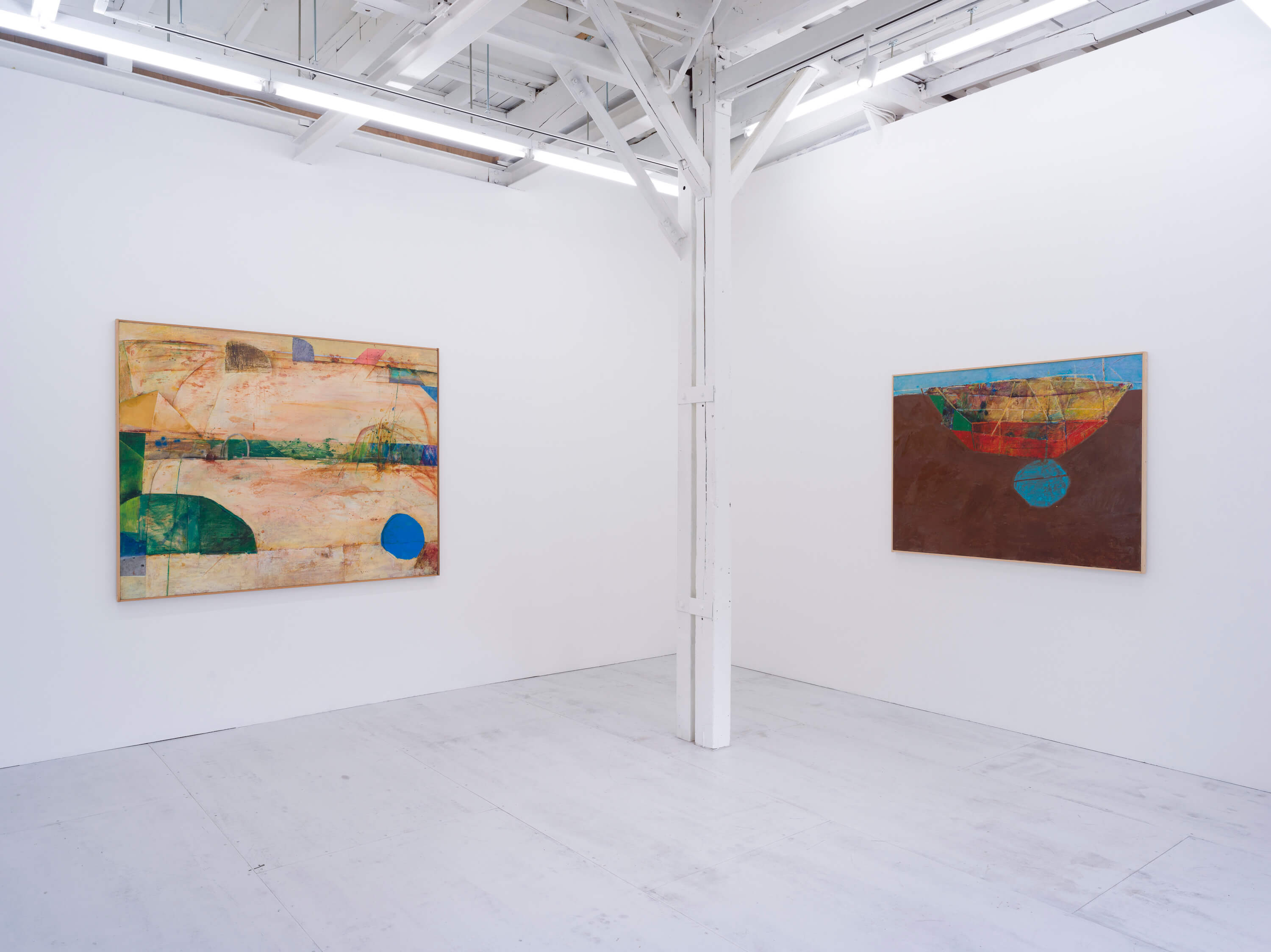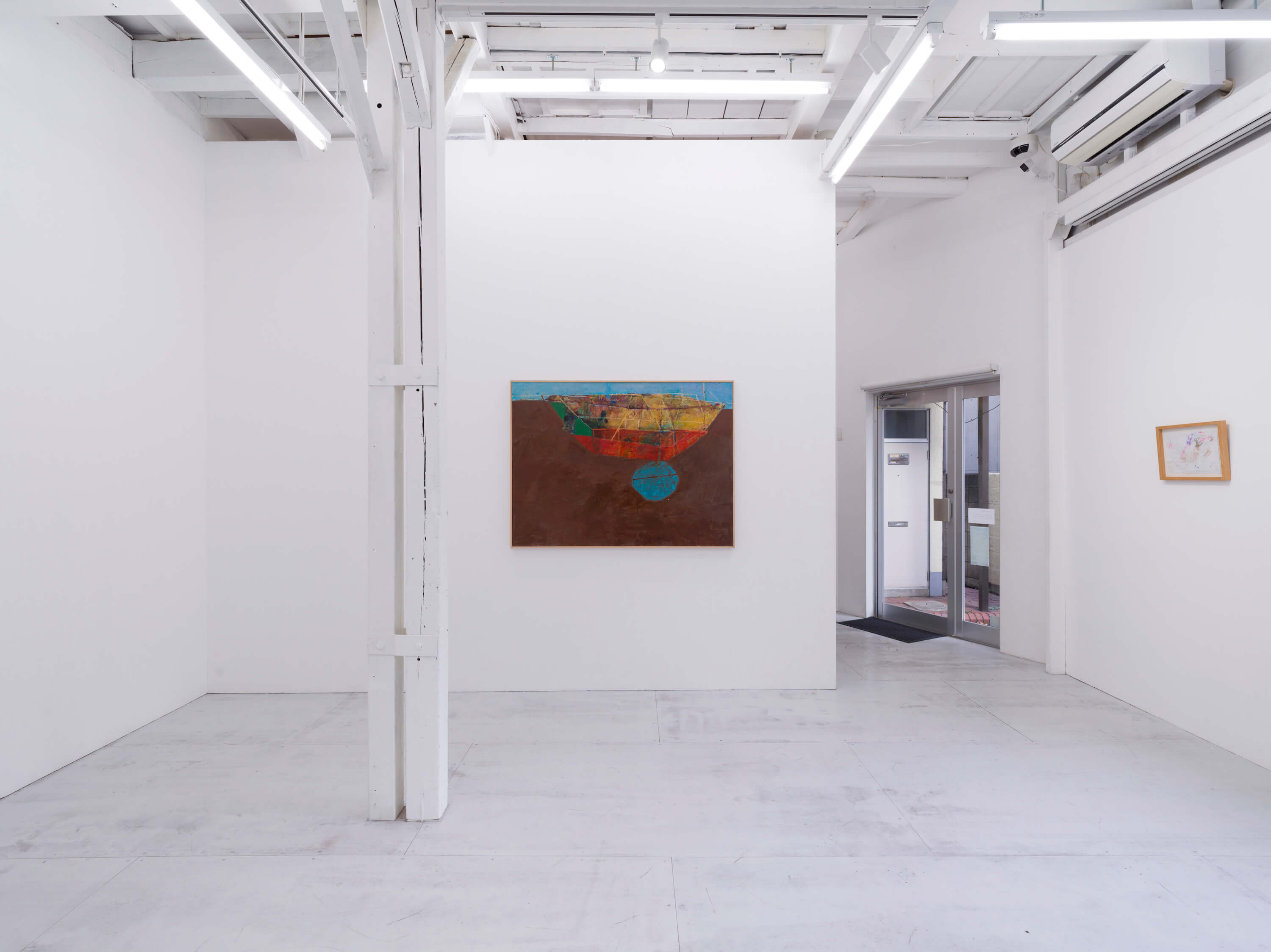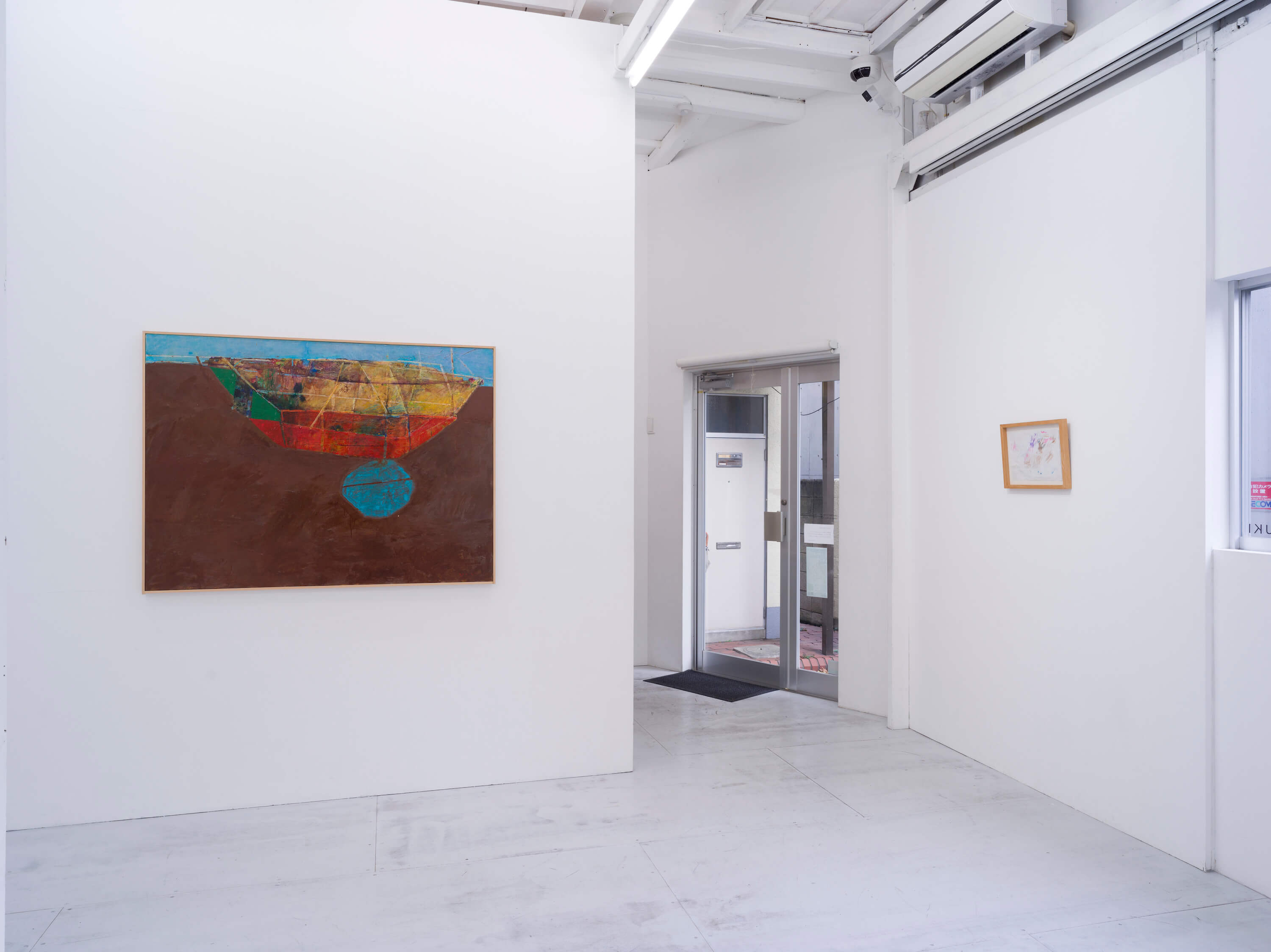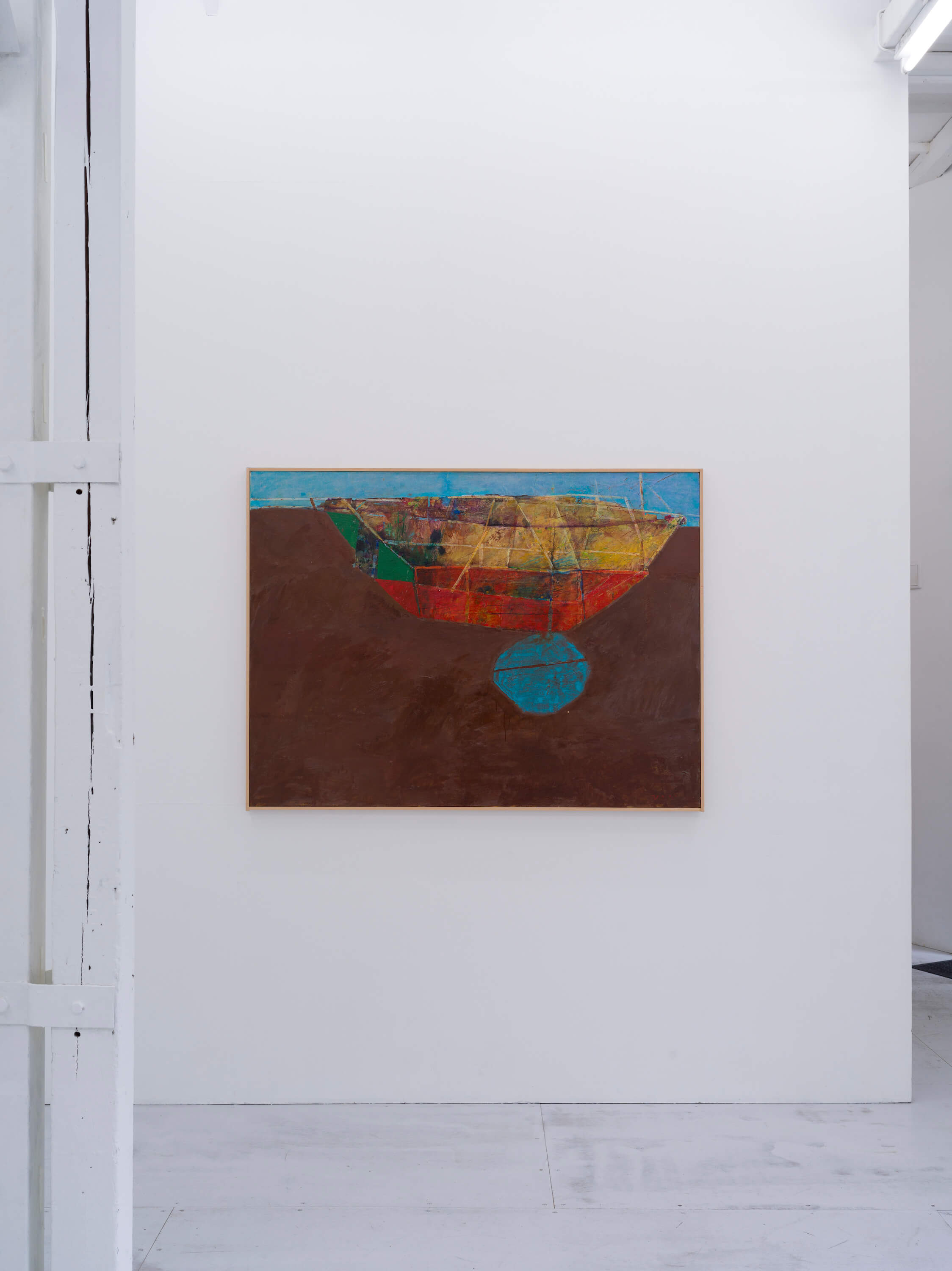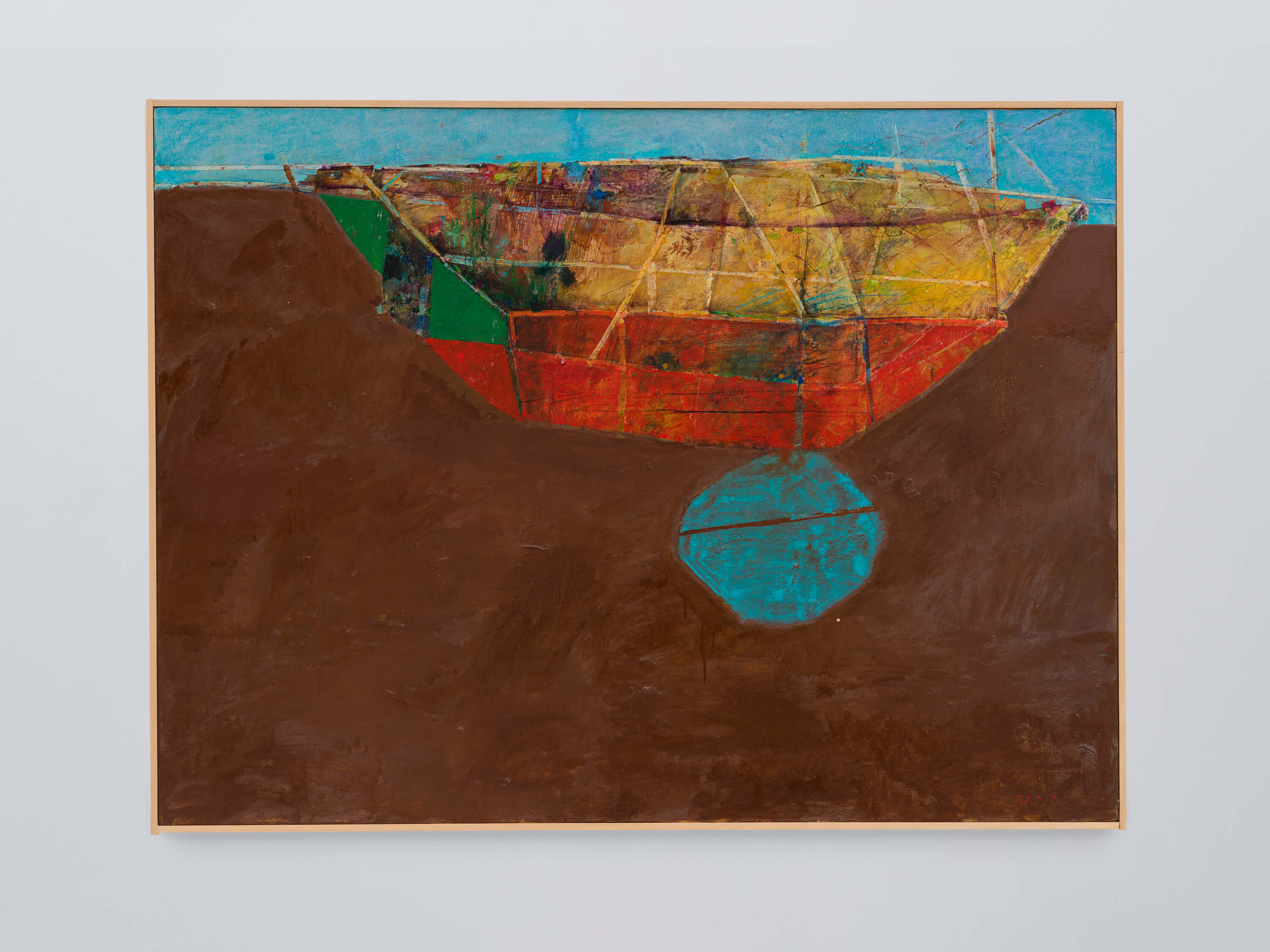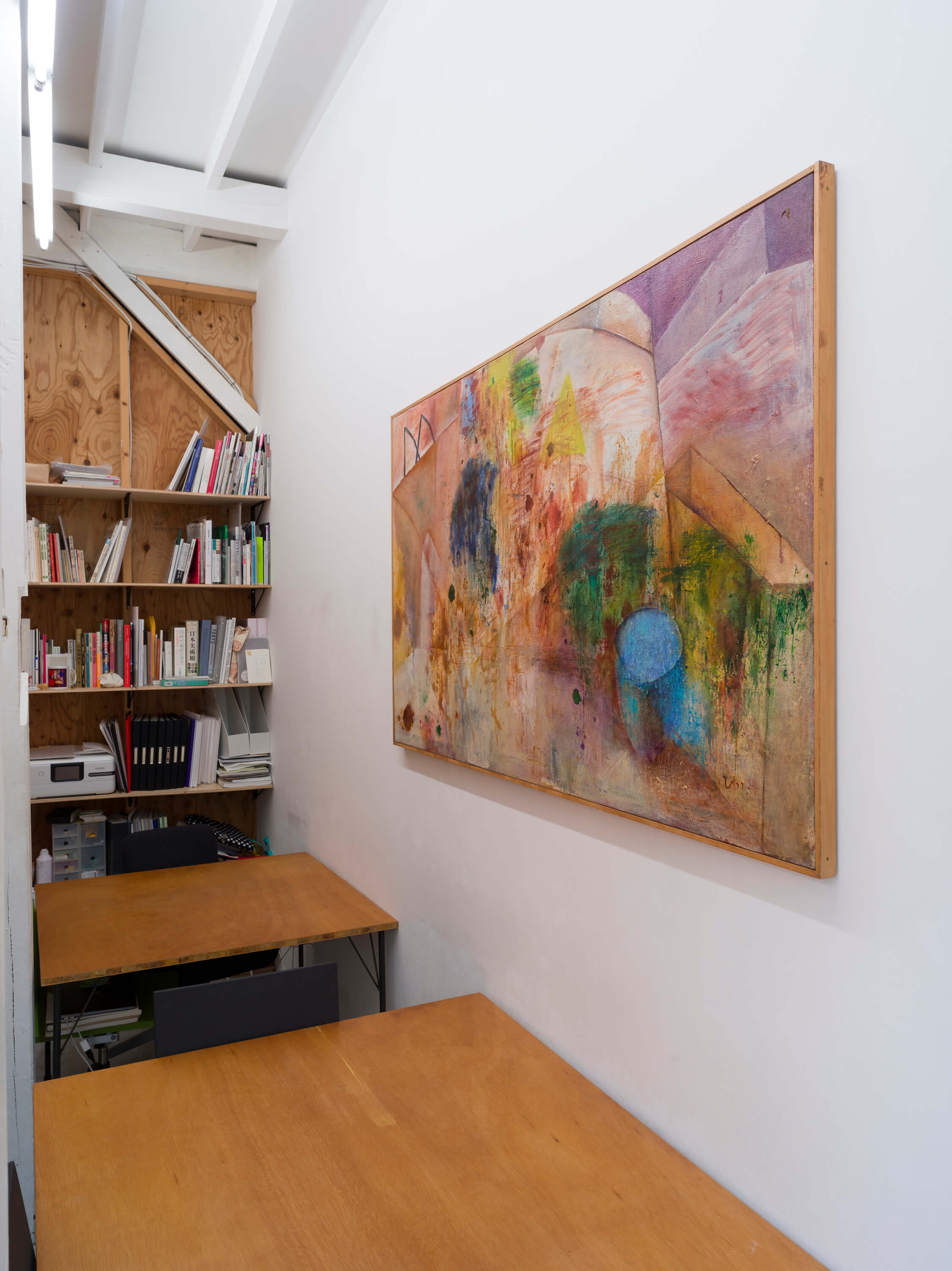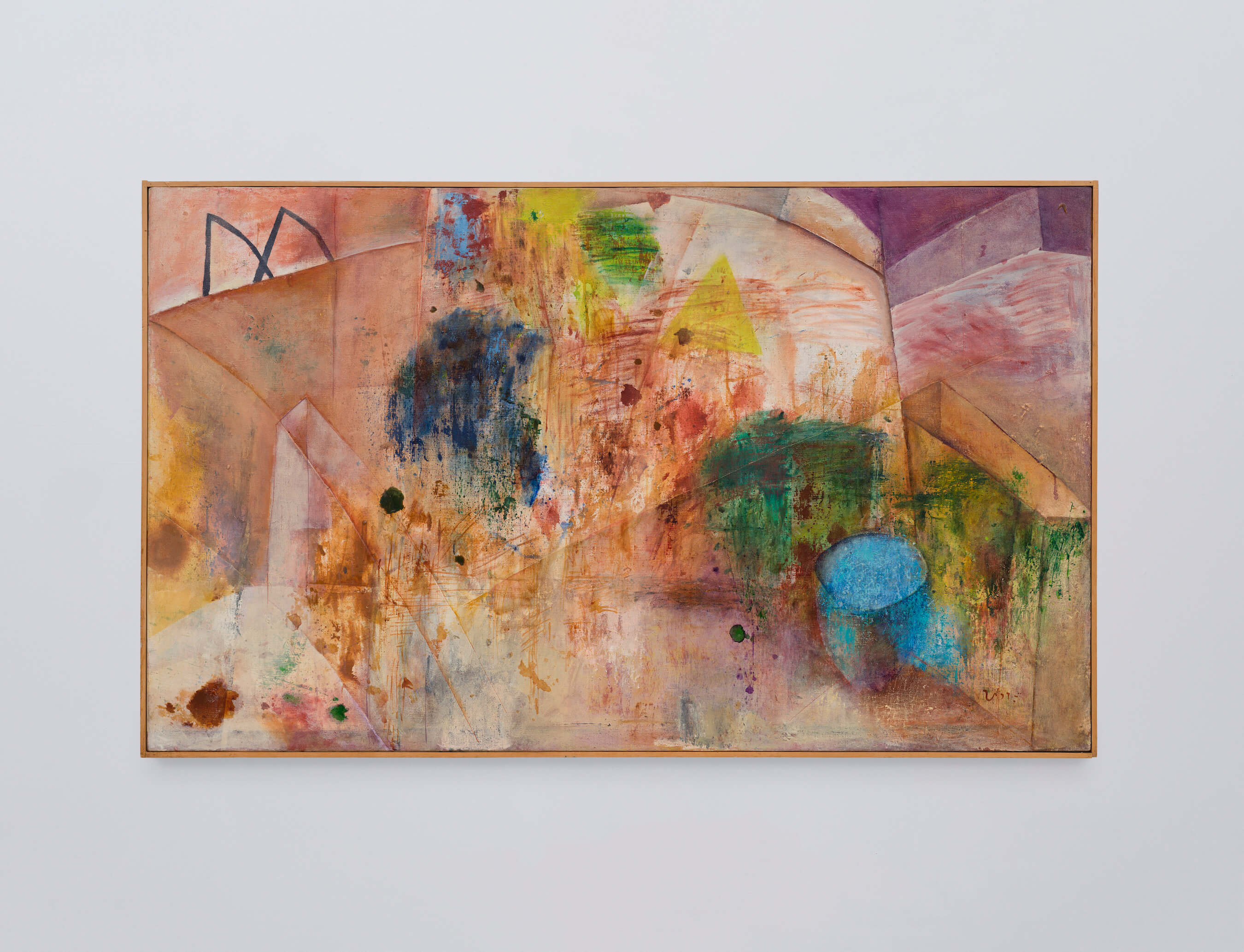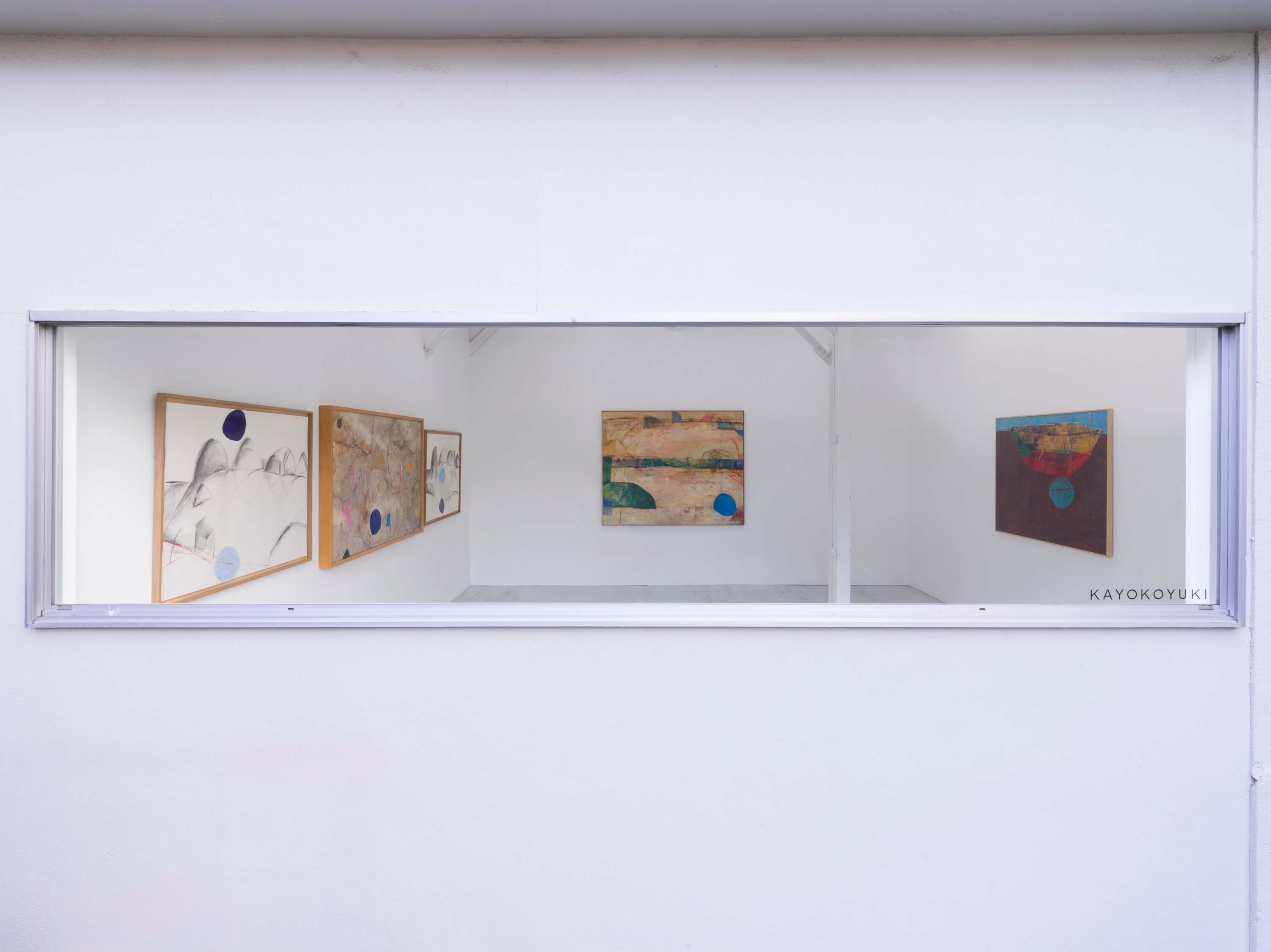KAYOKO YUKI
2-14-14 Komagome, Toshima-ku, Tokyo 170-0003 Japan
MAIL: info@kayokoyuki.com / TEL: +81(0)3-6873-6306
www.kayokoyuki.com
NOBUYA HITSUDA
October 28 - December 9, 2023
* Open by appointment from December 11th to 16th
ART WEEK TOKYO 2023
November 2 - 5, 10am-6pm
>
Cooperation: Hiroshi Sugito

Garden 1996 oil on canvas, 96.7 x 162.3 cm
At KAYOKOYUKI, we are pleased to announce the solo exhibition of Nobuya Hitsuda titled " " In this exhibition, we will showcase paintings and drawings created since the 1990s, along with newly crafted pieces that use workboards that were used and passed on from the Aichi Prefectural University of the Arts to Tokyo University of the Arts’ laboratory rooms.
Hitsuda reconstructs familiar landscapes—mountains, ponds, vacant parking lots, brick walls, wire fences, crushed cans, and flowers—employing geometric forms like oblique and straight lines, circles, triangles, and rectangles, complemented by vibrant and deep colors. This unique approach compresses distant and close-up views, forming a distinctive spatial experience. He’s motifs are often everyday landscapes, yet the composition offers a mysteriously intriguing realm where past and present intersect and flow continuously.
Born in 1941 in Ota Ward, Tokyo, Hitsuda spent his formative years in post-war Tokyo, where the ground of the streets were still exposed. Often climbing up the banks of Tama River, he gazed at the views of the rivers shifting attitude, shaped by typhoons and floods, and Tokyo's changing landscape during the economical boom(*1) which remains to be the reoccuring scenery of Hitsuda Nobuya’s paintings. His keen observations of various artworks across eras, along with exposure to movies, theater, and architecture, became the foundation for constructing rich sceneries through the accumulation of visual experiences in the city.
The exhibition's title, " " might bring to mind zenga paintings by Sengai. However, the emphasis here seems to lean more toward the direct morphological meaning of than its religious or symbolic connotations. The circular imagery that frequents in the exhibition portrays landscapes in flux, such as ponds, puddles, or vacant parking lots undergoing construction. Compositions featuring geometric forms lack a vanishing point, and the interplay of oblique and straight lines introduces fluctuations in the image. One’s perspective remains unfixed, and one’s gaze meanders diagonally, vertically, and horizontally from the center, causing the reflected landscape itself to oscillate.
A landscape that emerges by gathering fragments of scenery from here and there, "changing its form like a creature while calmly being there"(*2) in both the past and present. It is not only Nobuya Hitsuda’s Scenes Passed by but also, perhaps, the idea that it is one’S owns Scenes Passed by.
*1: Konishi Nobuyuki, "Nobuya Hitsuda: Leading Straight to the Landscape" (‘In the Little Playground, Hitsuda Nobuya and his surrounding students,’ Aichi Triennale Executive Committee, 2009)
*2: Nobuya Hitsuda, “Seens Passed by" ('Nobuya Hitsuda: Seens Passed by,' Tokyo University of the Arts Publishing, 2008)
Nobuya Hitsuda was born in 1941 in Oota ward, Tokyo, Japan and currently lives and works inAichi prefecture. After completing the graduate course at Tokyo National University of Fine Arts and Music in 1966, he worked as a lecturer at the said university, and later as a designer in the art department at NHK Japan Broadcasting Corporation. In 1975 he began teaching at the Aichi Prefectural University of Fine Arts, and from 2001 to 2009 taught as a professor at the Tokyo National University of Fine Arts and Music.
He has received the Award for Artist in Nagoya City (1984), the 28th Yasui Grand Prize (1985),and the Seiji Togo Memorial Sompo Japan Museum of Art Grand Prix (2011). His work has been included in several public collections such as The National Museum of Modern Art, Tokyo; Museum of Contemporary Art, Tokyo; the Agency for Cultural Affairs; The Toyota MunicipalMuseum of Art (Aichi); the Tokyo National University of Fine Arts and Music; the Aichi Prefectural Museum of Art; The Nagoya City Art Museum (Aichi); The Toyohashi City Museum Art and History(Aichi); the Aichi Prefectural Art University; The Tochigi prefectural Art Museum; The Museum of Fine Arts, Gifu; The Hamamatsu Municipal Museum of Art (Shizuoka); The Miyakonojo City Museum of Art (Miyazaki); The Kariya City Art Museum (Aichi) and The Suwa City Museum (Nagano).
In 2009, In the little playground: Hitsuda Nobuya and his surrounding students, a set of dual exhibitions at the Aichi Prefectural Museum of Art and the Nagoya City Art Museum, introduced the works of painter and teacher Nobuya Hitsuda, along with his 19 students including Yoshitomo Nara, Hiroshi Sugito and Shin Morikita.
